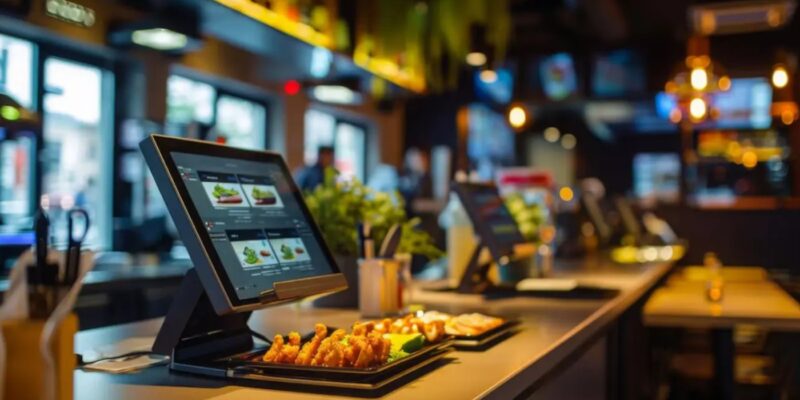The restaurant industry has witnessed a dramatic transformation in recent years, fueled by advancements in technology. Among the most pivotal innovations is the Restaurant Point of Sale (POS) system, a comprehensive solution designed to streamline operations, enhance customer experiences, and improve overall efficiency. This article delves deep into the functionalities, benefits, and considerations of implementing a modern POS system in the restaurant sector.
What is a Restaurant POS System?
A Restaurant Point of Sale system is more than just a digital cash register. It is an integrated software and hardware solution that manages transactions, tracks sales, monitors inventory, and provides valuable analytics for restaurant owners. Unlike traditional cash registers, today’s POS systems are equipped with advanced features that cater to the unique needs of the food and beverage industry.
Modern POS systems are often cloud-based, enabling restaurant owners to access real-time data from anywhere. They typically include a touchscreen interface, receipt printer, cash drawer, card payment terminal, and sometimes even handheld devices for tableside ordering.
Key Features of a Restaurant POS System
-
Order Management: Efficiently process orders, whether dine-in, takeaway, or delivery. Many systems allow servers to input orders directly from tableside devices, minimizing errors.
-
Inventory Tracking: Automatically update inventory levels as orders are placed, ensuring accurate stock management and reducing waste.
-
Payment Processing: Accept multiple payment methods, including credit/debit cards, mobile payments, and digital wallets, ensuring a seamless checkout experience.
-
Employee Management: Track employee shifts, attendance, and performance metrics directly through the system.
-
Customer Relationship Management (CRM): Store customer data, preferences, and order history to deliver personalized experiences and loyalty programs.
-
Analytics and Reporting: Generate detailed reports on sales, inventory, and customer trends to make informed business decisions.
-
Integration Capabilities: Connect with third-party platforms such as delivery apps, accounting software, and marketing tools for a cohesive operational ecosystem.
-
Tableside Ordering: Portable devices enable staff to take orders directly at the table, speeding up service and minimizing errors.
Benefits of Implementing a POS System in Restaurants
The adoption of a POS system brings a myriad of benefits to restaurants, regardless of size or concept. Here are some key advantages:
-
Enhanced Efficiency: Automating repetitive tasks like order processing and payment handling saves time, allowing staff to focus on providing excellent customer service.
-
Error Reduction: Digital order input minimizes the chances of mistakes, ensuring accuracy in order preparation and billing.
-
Improved Customer Experience: Faster service, personalized recommendations, and flexible payment options contribute to a superior dining experience.
-
Data-Driven Decisions: Access to real-time analytics empowers restaurant owners to make strategic decisions based on sales trends, customer behavior, and operational performance.
-
Cost Savings: By optimizing inventory management and reducing waste, POS systems help cut unnecessary expenses.
-
Scalability: Modern POS systems are designed to grow with your business, making them suitable for small eateries and large restaurant chains alike.
-
Regulatory Compliance: Ensure compliance with tax regulations and payment security standards, reducing the risk of legal complications.
How to Choose the Right POS System for Your Restaurant
Selecting the ideal POS system requires careful consideration of your restaurant’s specific needs. Here are some factors to keep in mind:
-
Type of Restaurant: The requirements of a quick-service restaurant (QSR) differ from those of a fine-dining establishment. Choose a system tailored to your service model.
-
Ease of Use: Opt for a user-friendly interface that minimizes the learning curve for your staff.
-
Cost: Evaluate both upfront and ongoing costs, including hardware, software subscriptions, and maintenance.
-
Scalability: Ensure the system can accommodate your restaurant’s growth, whether it involves opening new locations or expanding services.
-
Integration: Check if the POS system integrates seamlessly with other tools and platforms you use, such as accounting software and delivery apps.
-
Customer Support: Reliable customer support is crucial for resolving technical issues promptly and minimizing downtime.
-
Cloud-Based vs. On-Premise: Decide whether a cloud-based system (with remote access and automatic updates) or an on-premise system (local server-based) suits your operational needs better.
Future Trends in Restaurant POS Systems
The evolution of POS systems is far from over. Here are some trends shaping the future of restaurant technology:
-
Artificial Intelligence (AI) Integration: AI-powered POS systems can predict customer preferences, optimize staffing, and even suggest menu changes based on demand patterns.
-
Mobile and Contactless Payments: As digital wallets and contactless payment methods gain popularity, POS systems are adapting to ensure seamless transactions.
-
Self-Ordering Kiosks: Many restaurants are adopting self-service kiosks to reduce wait times and empower customers to customize their orders.
-
Blockchain Technology: Blockchain can enhance payment security and transparency, particularly in handling digital currencies.
-
IoT Integration: Internet of Things (IoT) devices, such as smart kitchen appliances, are being integrated with POS systems for better synchronization and efficiency.
-
Sustainability Features: Modern POS systems are incorporating tools to track and reduce food waste, helping restaurants adopt eco-friendly practices.
Challenges and Considerations
While POS systems offer numerous benefits, their implementation comes with challenges:
-
Initial Investment: The cost of hardware, software, and setup can be significant, especially for small businesses.
-
Training Requirements: Staff may need time to adapt to the new system, which could temporarily impact productivity.
-
Data Security: Protecting sensitive customer and business data is paramount. Ensure your POS system complies with the latest security standards.
-
Technical Issues: Downtime due to system glitches can disrupt operations, making reliable support essential.
Conclusion
A Restaurant Point of Sale system is an invaluable tool for modern dining establishments. By streamlining operations, enhancing customer experiences, and providing actionable insights, it empowers restaurateurs to stay competitive in a fast-paced industry. As technology continues to evolve, investing in a robust POS system is not just a trend but a necessity for sustainable growth and success in the restaurant business.
